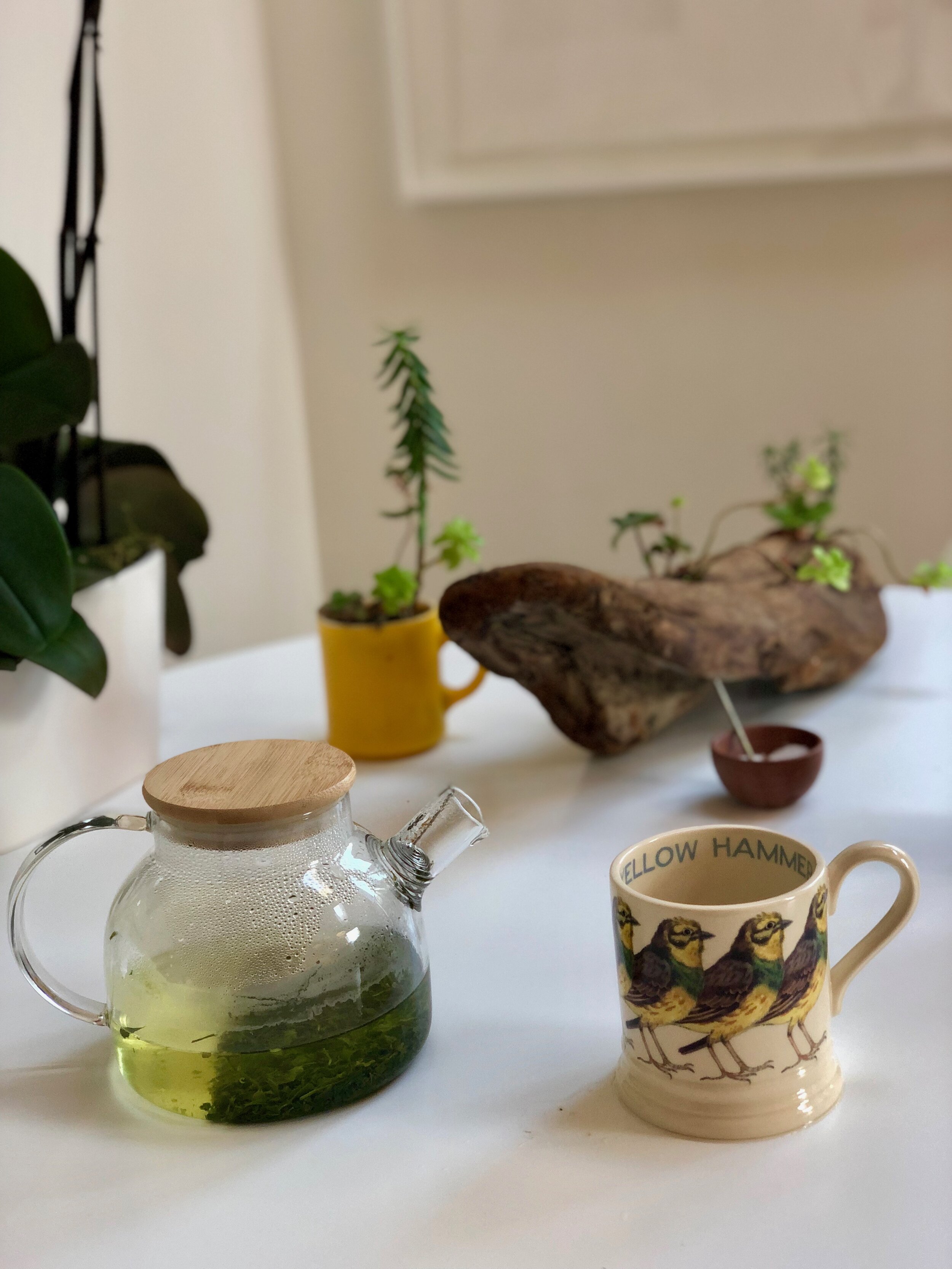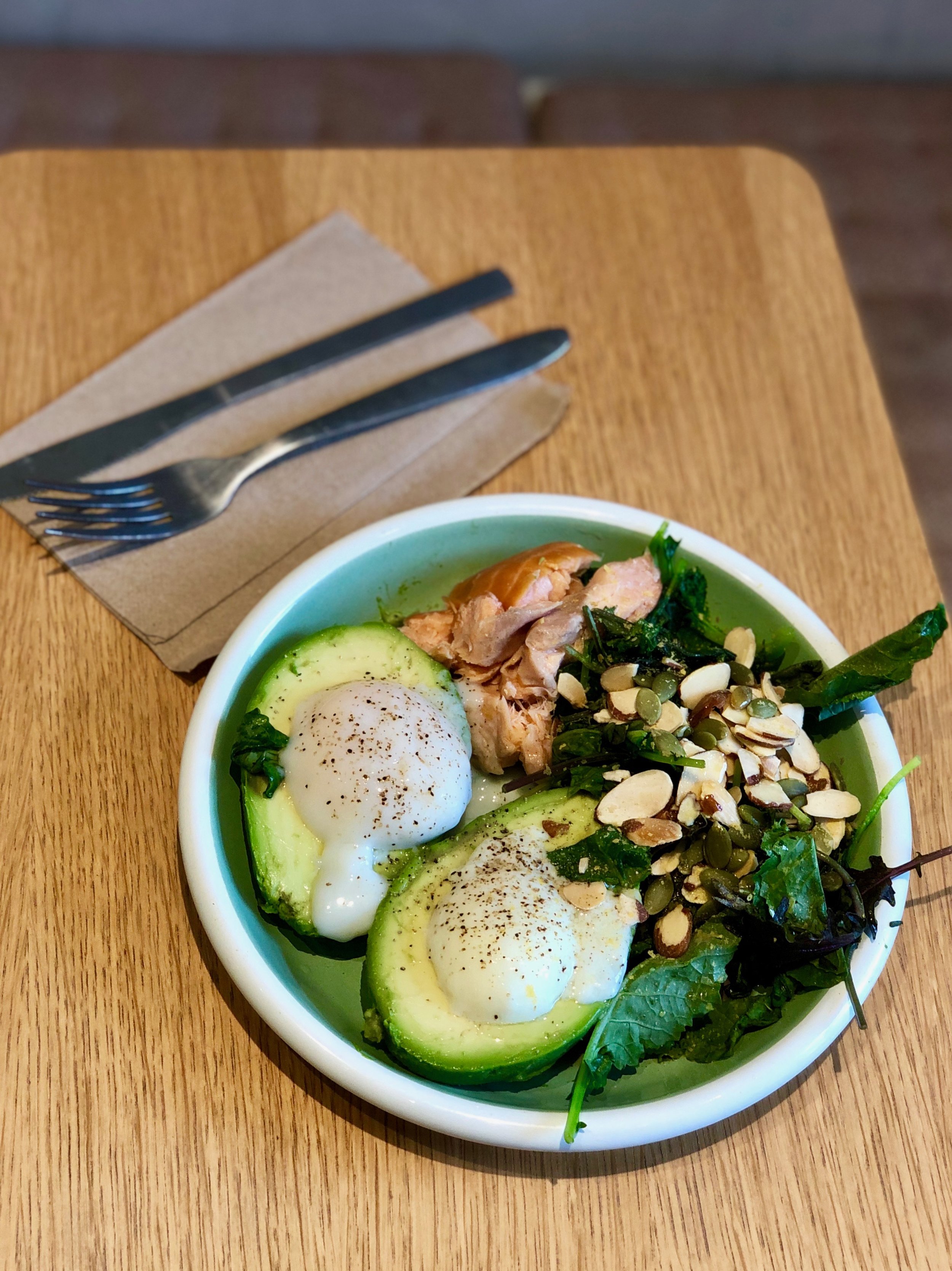Morning Ritual! I love starting my morning with a steaming cup of green tea. For a few years, I enjoyed a morning cup of coffee, but I eventually realized that the high caffeine dose in coffee was contributing to my anxiety, energy highs and lows, and inability to sleep soundly through the night (even when I stuck with only one cup at 8am). After quitting coffee, I started feeling physically better, but I missed the routine of having a steaming hot mug of something to get me started with my day. I recently turned to green tea, which I now swear by. My favorites are loose leaf sencha, genmai cha, and the occasional almond milk matcha latte.
Enjoying an almond milk matcha latte treat :)
Green tea is loaded with antioxidants, as is coffee. They both have caffeine too, but green tea has significantly less. Also, the caffeine in green tea is metabolized differently in our bodies than the caffeine in coffee. Instead of the quick energy jolts and crashes from caffeine in coffee, the caffeine in green tea is absorbed slowly and has a more prolonged release, helping to stabilize our energy levels.
Of course, it’s important to keep in mind that we’re all different and some of us handle the caffeine from coffee just fine! For those of you who struggle with anxiety, unstable energy levels, and disruptive sleep, I encourage you to try swapping your coffee for green tea! Let me know what you think :)
Sources and additional reading:

























